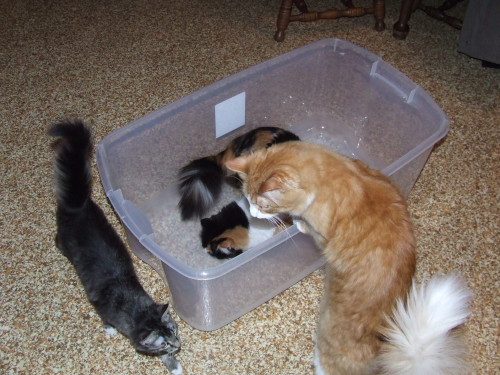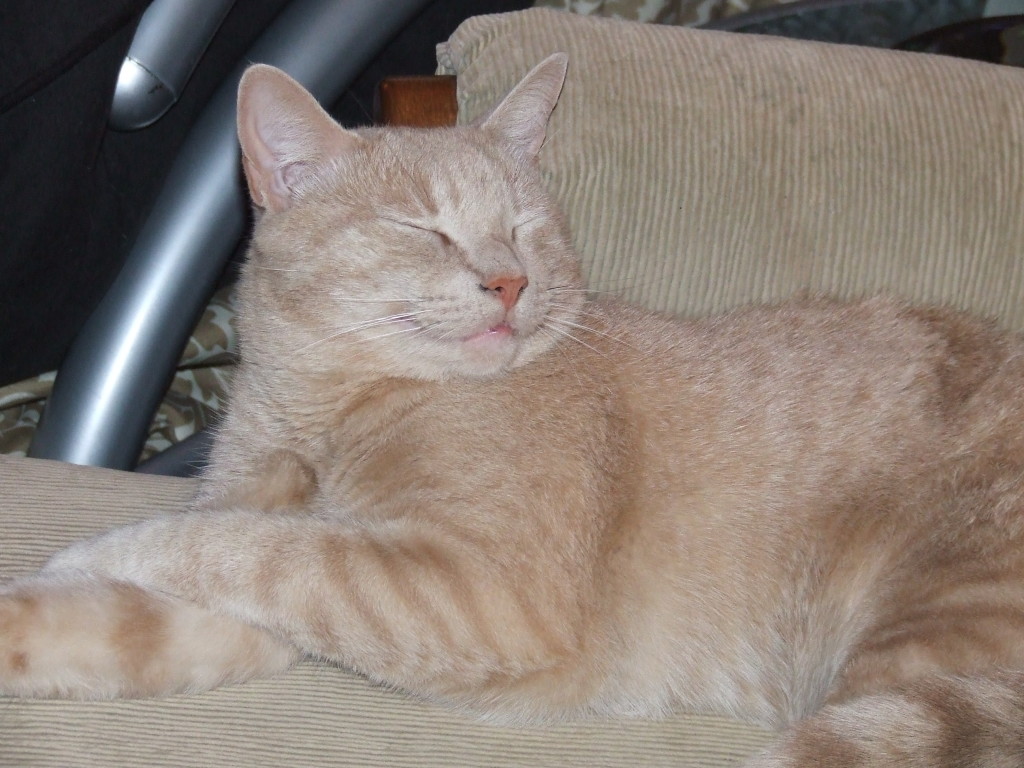
Litter boxes should be large – 1.5 times as long as the largest cat – and open.
One of the most important aspects of a cat’s indoor life is the litter box. And, sadly, one of the most common reasons cats end up in shelters is litter box avoidance issues. Since we are responsible for bringing these beautiful creatures inside our homes (where it’s safe!), we must do our part to ensure their litter boxes are as appealing and accommodating as possible. Cleaning and maintaining them might not be anyone’s favorite thing to do, but making the effort is critical to the health and comfort of your kitty. And ensuring they are properly appealing starts long before then.
Here are the five basic rules for setting up and maintaining litter boxes:
1. Large, open boxes. When it comes to litter boxes, bigger is better. Aim for a box that is at least 1.5 times as long as your cat. Skip the pet stores and head over to your local Home Depot or Target and pick up a large plastic tote instead. You’ll get more and pay less. Oh, and skip the lid, too. Covered cat boxes are typically not favored by cats – they concentrate odors inside the box and can make some cats feel cramped and potentially trapped. Automatic boxes aren’t favored either, as they often startle cats when they activate.
2. Multiple boxes. The general rule is one box for every cat, plus one, and if you have multiple stories in your home, you’ll need at least one on each floor. This ensures cats don’t have too far to traipse to reach a litter box (how many floors do you want to climb when you need a bathroom?) and helps prevent resource guarding in multi-cat homes. Also, some cats are extra clean and prefer defecating in one box and urinating in another… you need to give them enough boxes to accommodate this. And don’t put all the boxes on each floor in the same location! In the feline mind, this is the equivalent of having one very large box.
3. Location, location, location! Put the boxes in semi-quiet locations, away from equipment – like the washer and dryer – that could come on unexpectedly and startle the cat. Don’t put any boxes near the cat’s food plates or water dishes, and avoid high household traffic areas. If the cat is interrupted or feels unsafe in a litter box, he is unlikely to keep using it. Don’t tuck them away in the back of closets or wedged into tight corners, either; if the cat feels he could be trapped in the box by another cat, inquisitive dog, etc., he is likely to find someplace more secure to do his business.
4. The right litter, at the right depth. Cats have individual preferences, but generally like a soft, sandy litter. Choose unscented or minimally scented over scented options, as the perfumes can offend the cat’s amazingly strong sense of smell and put him off the box altogether. Layer between three and four inches of litter, and refresh the litter as you scoop to maintain the box at a constant depth.
5. Scoop every day! Cats are fastidious animals and have no more desire to use a dirty litter box than you would to use use a toilet after someone else was in there and didn’t flush. Scooping every day also keeps odors down and helps the litter last longer. Don’t think about it, just do it!
Cats are a mystery to us in many ways, but what they need from a litter box isn’t one of them. Keep your boxes large, plentiful, safe, soft and clean – and keep your cats happy! 🙂

Look at Ralph smile!

